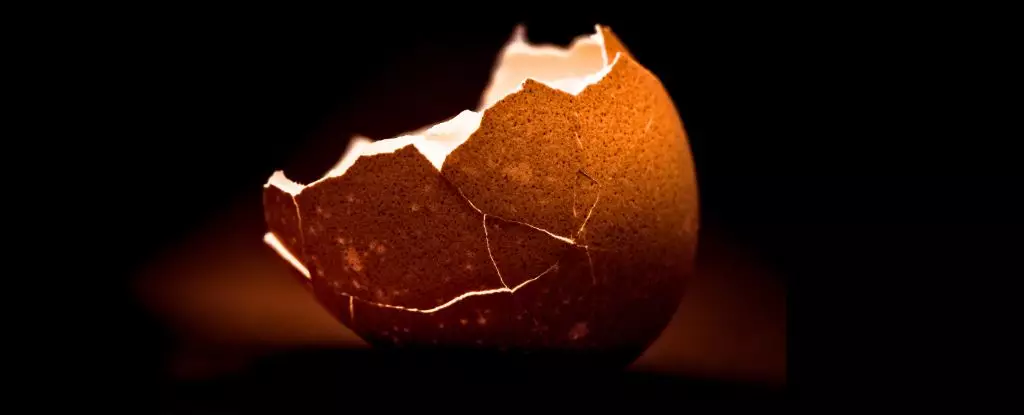We’ve all had that moment of frustration in the kitchen: the boiled egg that looks more like a war casualty than a perfect snack. The hard outer shell adheres stubbornly to the delicate egg white, often tearing it apart and leaving us with a cringe-worthy mess. This common culinary battle can often feel like a daunting task, yet understanding the science behind the egg’s structure offers promising solutions. At the core of the issue are the porous shell, inner and outer membranes, and the air cell that forms between these layers, which all play a significant role in the ease of peeling.
The innermost layer, the egg white or albumen, naturally has a lower pH, and several studies suggest that this is a crucial factor in peelability. An alkaline environment, indicated by a pH of around 8.7 to 8.9, facilitates a smoother peeling process, but many home cooks are unaware of this important detail. The crux of the problem often lies in the freshness of the eggs and how they are stored.
Freshness and Storage: The Key to Easy Peeling
It seems counterintuitive, but fresh eggs are notoriously hard to peel. During the aging process, an egg loses moisture, causing the air cell to expand. A larger air cell helps create a pocket that initiates the peeling process. Further complicating matters is the fact that as eggs age, the albumen increases in alkalinity, which also contributes to easier peeling.
Studies conducted decades ago revealed that keeping eggs at room temperature, ideally around 22 degrees Celsius (or 72 degrees Fahrenheit), outperforms colder storage methods when it comes to peelability. While the refrigerator is often viewed as an essential for food safety, it may inadvertently complicate the egg-peeling endeavor. Home cooks should carefully consider how and where they store their eggs, weighing the risk of spoilage against the benefits of easier peeling when boiled.
Mastering Boiling Techniques for Success
When it comes to boiling eggs, the process can significantly impact the final product. A popular technique among culinary enthusiasts is to start cooking the eggs in boiling water before lowering the temperature to a simmer. This method, preferably applied to eggs that have reached room temperature, allows the initial exposure to high heat to aid in separating the membrane from the shell.
The theory behind this heating strategy is compelling: embryos can cook evenly while the shell’s adherence diminishes. The rapid increase in temperature helps the proteins in the egg white to denature properly, optimizing their bonding and making peeling pipes easier. After boiling to the desired doneness—whether soft, jammy, or hard—quickly cooling them in ice water can lead to a slightly shrunken egg white, further improving peelability.
Tricks and Additives: Exploring Alternative Methods
Beyond the fundamental cooking techniques lies a world of “hacks” that claim to aid in the peeling process. One method involves adding salt to the boiling water. While some studies have suggested that this can yield positive results, the efficacy often decreases with the extended storage of the eggs. Other substances such as vinegar and baking soda have also been proposed as effective aids due to their chemical properties. Vinegar, an acid, targets the calcium carbonate in the eggshell, while baking soda enhances the alkalinity of the boiling water.
The envelope of creativity doesn’t stop there. Innovative methods like pressure steaming have emerged, concentrating on how moisture can permeate the shell and promote easier peeling. This method may not yet have widespread academic endorsement, but anecdotal evidence and culinary forums are rife with accounts of its efficacy.
Beyond the Peeling: Utilizing the Shells
Once you have successfully managed to apply your newfound peeling wisdom, it’s essential not to overlook the potential of discarded eggshells. Instead of tossing them in the trash, consider their multiple uses. From compost to natural pest deterrents, the humble eggshell has many environmentally friendly applications. They can serve as mini biodegradable pots for seedlings, providing nutrients back to the soil, or even find their way into innovative scientific research.
Eggshells embody an often-underestimated aspect of the culinary experience—regenerative practices. In a world increasingly focused on sustainability, remaining mindful of what we discard allows us to circularize our cooking habits and foster a more responsible approach to food.
In cooking, the process of peeling boiled eggs transcends everyone’s experience; it’s about understanding the science at play and making informed choices. By elevating our approach to this simple task, we can transform it from a frustrating challenge into a successful achievement in the kitchen.

